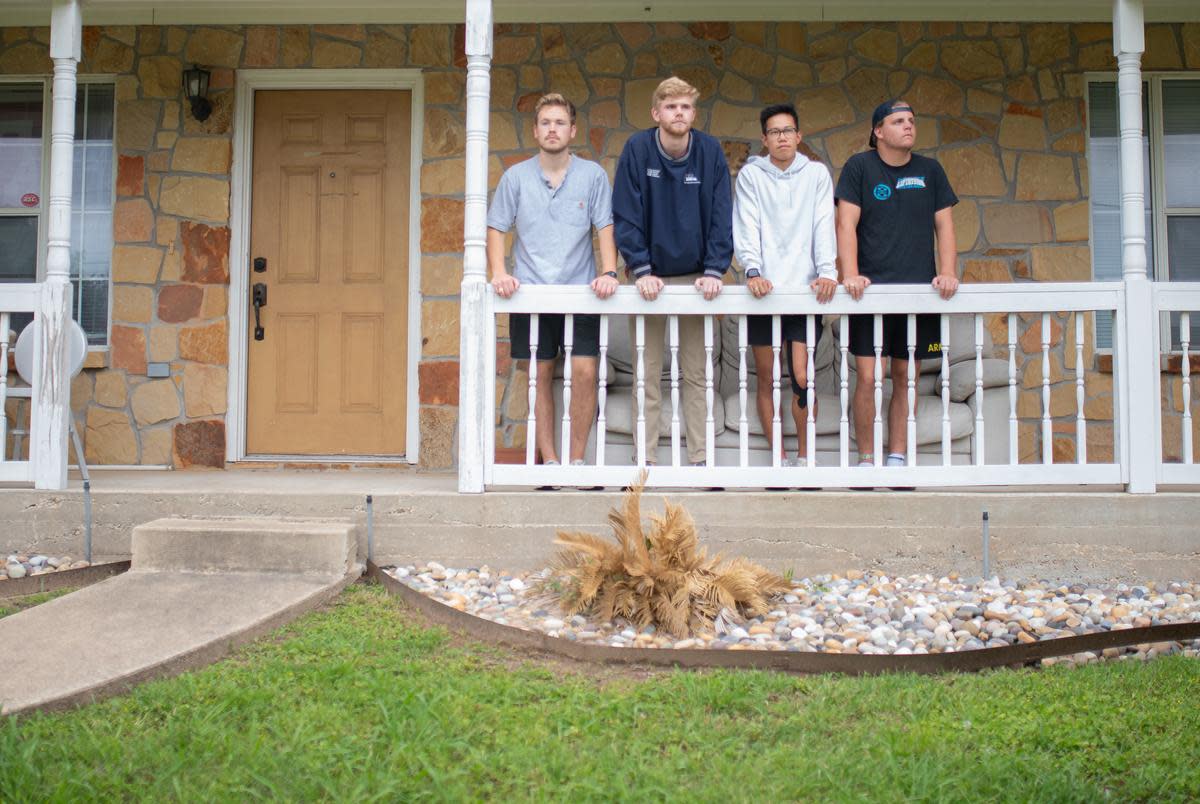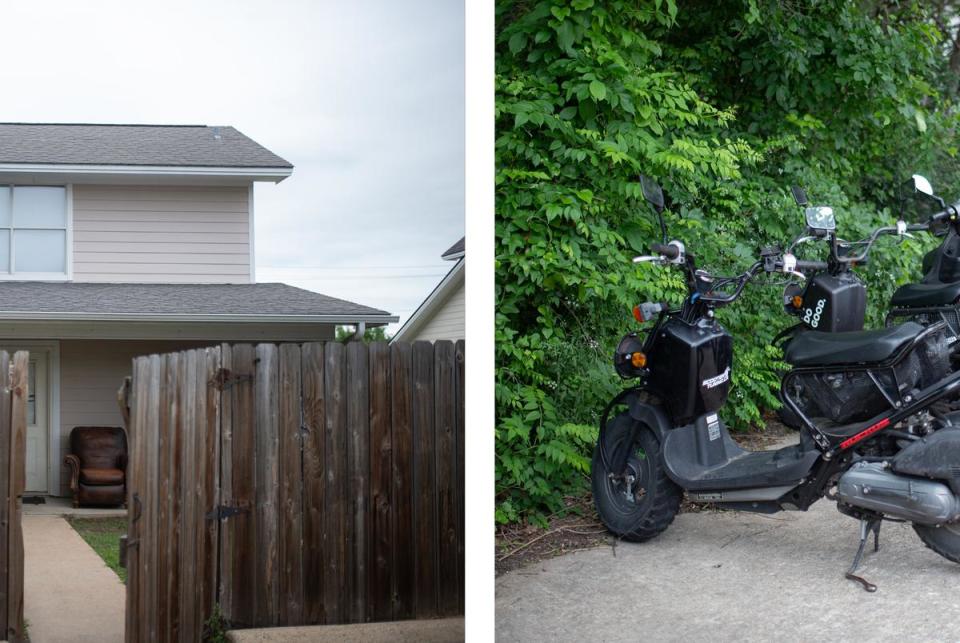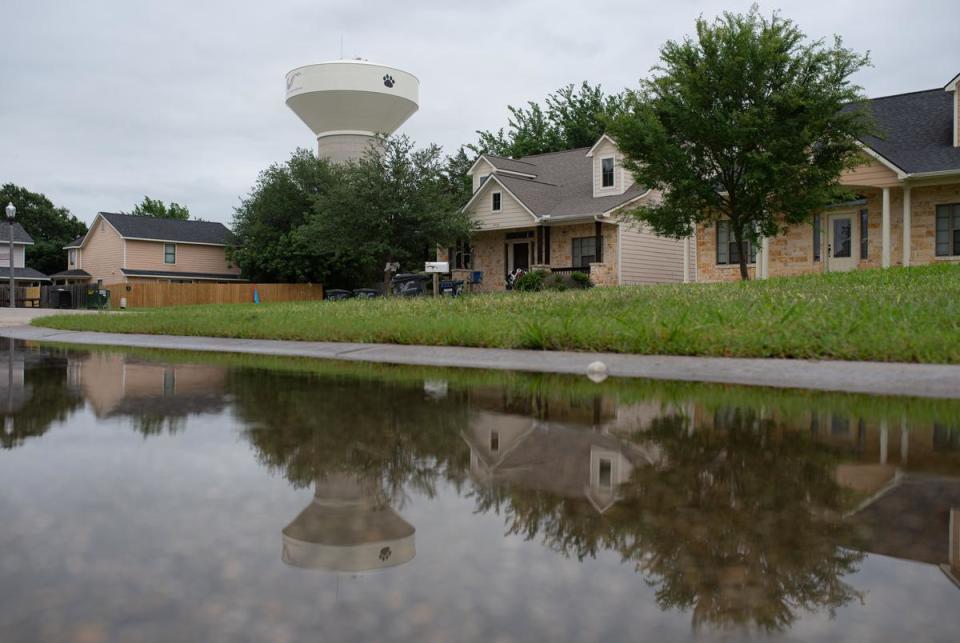Push to enforce occupancy rule in College Station highlights Texas A&M students’ housing woes

For three years in college, Texas A&M University student Ethan Tan lived in houses near campus with six roommates, each of them paying about $400 a month in rent. Tan, a graduating senior, said that low cost saved him from having to take out more loans and pick up long work shifts, which would’ve barred him from participating in some of the leadership opportunities he took at school.
But starting in June, College Station will enforce an occupancy ordinance that prohibits more than four unrelated people from renting a single-family unit together — and students in housing arrangements such as Tan’s will be liable to fines similar to parking tickets.
While a version of the rule has already existed in the city for around a century, it had remained largely unenforced. The push for some kind of enforcement started about two years ago amid simmering tensions between A&M students living in single-family units near campus and homeowners in those neighborhoods.
The friction not only highlights how college students have increasingly struggled with housing costs but also the challenges cities across Texas face when trying to balance homeowners’ concerns with the need to provide affordable housing.
Fred Dupriest, who lives three blocks from campus and is a leading advocate for the ordinance, said single-family homes should be prioritized for families. He also believes that allowing large groups of students to rent a house together makes it more difficult for families to compete for those same properties. Enforcement of the ordinance could help cool the demand on the single-family units students would have tried to rent, according to A&M real estate and finance professor Jonathan Halket.

Hundreds of A&M students pushed back against the occupancy restriction through petitions and speaking up at City Council meetings. They said the ordinance would increase the financial burden of housing and college in general.
The typical rent in the College Station area sat at more than $1,500 a month in April, according to Zillow data — some 29% higher than it was the same month in 2019. About 57% percent of renters in the Bryan-College Station region are “cost-burdened,” according to Harvard University’s Joint Center for Housing Studies, meaning they spend more than 30% of their income on rent and utilities. A 2021 report by A&M’s Division of Student Affairs found that more than one third of undergraduate students said they worried about the cost of food and housing during the previous school year.
Ultimately, city officials sided with the neighborhood groups. College Station’s code enforcement employees will hand out citations if they find evidence that the ordinance is being violated, like seeing more than four cars consistently parked outside a house or following up on complaints from residents, according to College Station City Council Member Bob Yancy, who voted to pass the ordinance changes.
Ethan Moss, a junior at A&M who has shared a house with four roommates for the past two years, said students in his position now have to either risk getting fined or seek other housing options that will likely be more expensive or further away from campus.
“Every side in this debate has a reasonable position,” Yancy said. “The big picture is the growth of the city of College Station. It's the extreme growth of Texas A&M University, and in my opinion, the fact that student housing at Texas A&M University has not kept up with the growth in student population.”
Yancy said the city prioritized the neighborhood groups’ concerns this time but said more housing affordability solutions are needed. Over the past two years, College Station has rezoned over 1,000 single-family properties to allow the development of denser housing stock like duplexes, small apartment complexes and “shared housing” units where more than four unrelated people can live together.
Both supporters and critics of the ordinance agreed that building more high-density housing — namely apartment complexes — was needed to alleviate the housing burden for both students and families.
Jonathan Meer, an economics professor at A&M, referred to noise and street parking concerns as valid reasons for restricting occupancy but predicted that the law would accentuate the need for affordable housing.
“If you want to reduce rental prices, allow for a lot more high-density, student-oriented housing close to town,” he said. “This is about as simple of a problem as we have in the public policy sphere these days. There’s not enough housing; build more housing.”

For a growing number of students at public universities, the primary challenge of paying for college lies in housing and other non-tuition expenses, according to Bryan Cook with the Urban Institute. Housing affordability can pose specific challenges to students, who often aren’t eligible to apply for federal housing programs or can face discrimination from landowners who might see them as irresponsible renters. Students at other campuses have also rallied around inadequate or unaffordable housing conditions. In UT-Austin, students launched the University Tenants’ Union in March.
“We need to start addressing this,” said Leanne Davis, a postsecondary education researcher at Education Northwest. “Students who are dealing with housing insecurity and trying to complete college are not going to be as upwardly mobile. That's going to affect not just them, it's going to affect their families and their children. They'll still be dealing with us for generations to come.”
Disclosure: Texas A&M University has been a financial supporter of The Texas Tribune, a nonprofit, nonpartisan news organization that is funded in part by donations from members, foundations and corporate sponsors. Financial supporters play no role in the Tribune's journalism. Find a complete list of them here.
We’ve got big things in store for you at The Texas Tribune Festival, happening Sept. 5–7 in downtown Austin. Join us for three days of big, bold conversations about politics, public policy and the day’s news.

